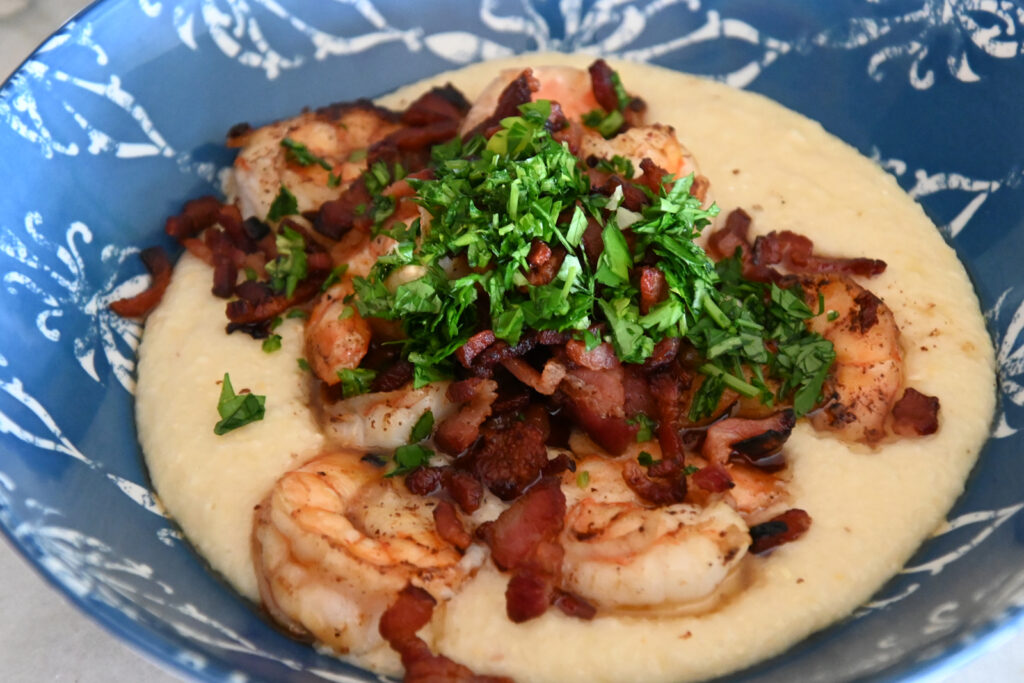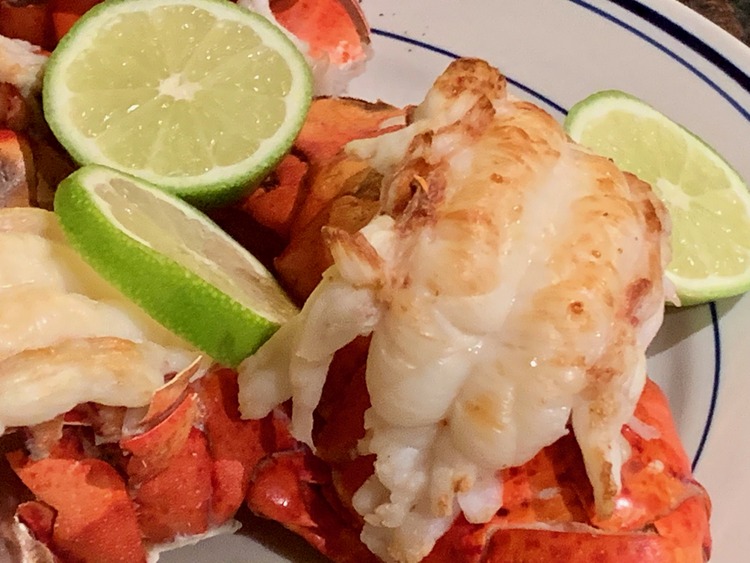Shrimp and Gruyere Grits
The history of shrimp and grits can be traced back to the southern coastal regions of the United States, specifically to the Lowcountry of South Carolina and Georgia. The dish has roots in both African and European culinary traditions.
Grits themselves have a long history and were initially a food of Native American origin. Indigenous peoples in the Southeastern United States, such as the Cherokee and Creek tribes, prepared a similar dish using cornmeal. When European settlers arrived in the region, they adopted and adapted this Native American staple.

Shrimp, being abundant in the coastal areas, were incorporated into the cuisine of the region. Enslaved Africans, who brought their culinary traditions with them, also played a significant role in shaping the development of the dish. African cooking techniques and flavors influenced the preparation of shrimp and grits, creating a fusion of African, Native American, and European culinary influences.
Originally, shrimp and grits were considered a simple and humble dish, often eaten by fishermen and laborers in the coastal communities. It was a dish that made use of readily available ingredients, such as shrimp from local waters and corn from the surrounding farms.
Over time, shrimp and grits gained popularity beyond the working-class communities and became a cherished regional specialty. It has since evolved into a dish that is enjoyed by people of all backgrounds and is now considered a classic of Southern cuisine. My husband is from the South and shrimp and grits is nearly a religious dish for him.
This is a simple recipe that comes together quickly for a fast, satisfying dinner.
Ingredients
- 4 cups organic chicken stock
- 1 cup quick grits
- 1 1/4 cup shredded Gruyère cheese
- 4 tablespoons unsalted butter
- Salt and freshly ground pepper
- 3/4 pound slab bacon, cut into slim matchsticks
- 1 shallot, minced
- 1 pound shelled and deveined large shrimp
- 1/4 cup chopped flat-leaf parsley
Instructions
- Boil the chicken stock in a medium saucepan. Whisk in the grits and stir constantly over moderately high heat until the grits thicken and are tender. Add the cheese and butter, season with salt and pepper and stir until the cheese is melted and blended. Remove from the heat and cover. Set aside.
- In a large, cast iron skillet, add the bacon and shallots and cook over moderately high heat, stirring occasionally, until the fat is rendered and the bacon is golden. Remove bacon and shallots to a paper towel lined plate to drain.
- Remove all but about 3 tablespoons of the bacon fat and the shrimp to the hot skilled. Cook until shrimp are curled and opaque, about 3 minutes.
- Spoon the warm grits into shallow bowls and top with the shrimp and then bacon and parsley. Serve immediately.







